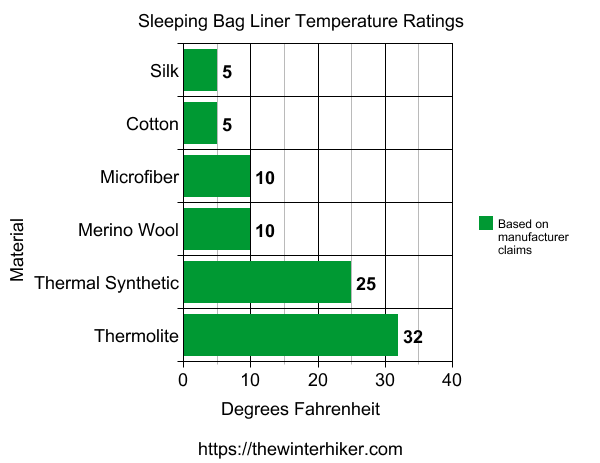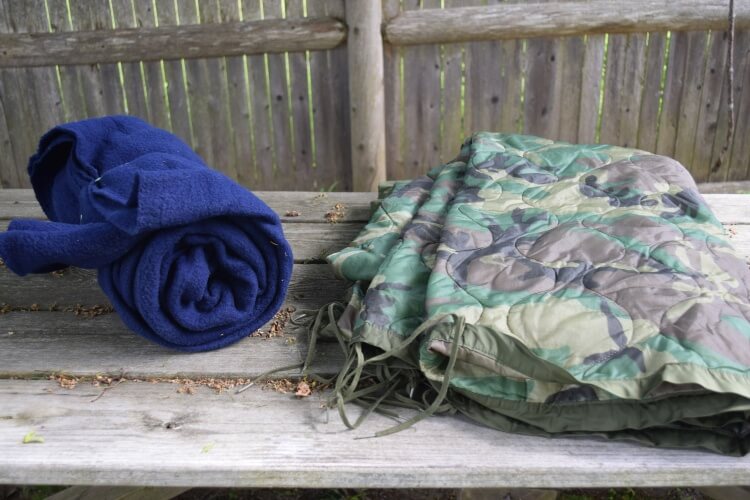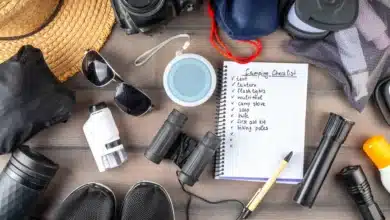Do Sleeping Bag Liners Actually Work? And Which Ones?
A lot of hikers are looking to increase the temperature of their sleeping bags for colder weather, and a liner seems like an appealing choice. But do sleeping bag liners actually work?
The feedback I got really depends on a lot of factors. Some people call them scams while others say they work like magic. So what really works? Should you invest in a sleeping bag liner?
Do sleeping bag liners work? Yes, but the effectiveness depends on the type of material. Sleeping bag liners also keep your bag clean and help it last longer.
How Much Warmth Does a Sleeping Bag Liner Add?
How much warmth a sleeping bag liner will add really depends on a few factors. The biggest factor is the type of material. Other factors that play a factor are the shape and model.
Some manufacturers claim as much as 32°F of warmth can be added, while others are in the lower end, around 5°F. A lot of these people will dispute these manufacturer claims, saying that expected temps are around half of what is advertised. Either way, you are expected to get at least a little bit of warmth and keep your bag clean.
What Material Is Best?

If you’re looking to add warmth to your bag, you’ll want to pick a liner that’s made from thermal synthetic, merino wool, or microfiber/microfleece.
If you are just looking for a liner to keep your bag clean and something that will feel comfortable, then silk will be fine as well. Silk is really compact making it great for travel.
| Silk (Up to 5°F) |
Soft, light, and compact. Breathes well, wicks moisture, and can be a little pricey. Adds minimal warmth. |
| Cotton | Bulky, not as compact, doesn’t breath or wick away moisture well. Good for traveling. |
| Microfiber / Microfleece (5-10°F) |
Good for comfort. |
| Merino Wool (5-10°F) |
Very soft and wicks away moisture. Can be a little pricy. |
| Thermal Synthetic (Up to 25°F) |
Warm, comfortable, breathable, and wicks away moisture. |
Silk liners are really meant to keep keep your bag clean and aren’t designed to actually keep you warm. Any extra warmth is a bonus really.
If you are looking for the absolute warmest sleeping bag liner, the warmest I could find is the Thermolite Reactor Fleece Liner, which adds 32°F, which is huge. Head over to Amazon to compare prices and reviews for all Thermolite Reactor products.
Thermolite fabric works so well because it uses hollow core fibers which trap in air, making it a very lightweight and a warm insulator.
You may also like How To Make Your Winter Sleep System: Complete Guide
Are Sleeping Bag Liners Worth It?
A lot of campers are looking to increase their sleeping bag warmth without having to buy another bag. If you’re car camping at a campground, you can shove whatever else you want in your car, so you might just be better off bringing extra clothes and blankets.
But if you are a backpacker, being able to carry whatever you want isn’t a luxury you have. Especially for longer hikes like hiking the Appalachian trail, sleeping bag liners add extra weight and every ounce counts. Thru-hikers really need to weigh the pros and cons of carrying a liner.
It’s my opinion that you shouldn’t rely on a sleeping bag liner to stay warm during cold weather, but staying warm isn’t the only benefit of sleeping bag liners. There are other reasons to use a liner, which probably are just are important.
Reasons to Use a Sleeping Bag Liner
Yes, sleeping bag liners can add a little bit of warmth, but there are also other benefits:
- Adds extra warmth to your sleeping bag
- Prolongs the life of your sleeping bag by keeping it clean
- Is easier to wash than a sleeping bag
- Can be used by itself during the summer and warm weather
- Can be used as a sleep sheet in hostels to avoid dirty beds
Sleeping bag liners prevent your sweat and body oils from entering your sleeping bag. Without a liner, your bag can become dirty and lose its effectiveness. If you’re using a down sleeping bag, the sleeping bag liner will help prevent your sweat from ruining the down loft. This will make your bag last longer and keep you warmer.
Washing your sleeping bag liner instead of your bag will prolong the life of your sleeping bag by a lot. A liner is much easier to wash and will save wear and tear on your bag caused by washing.
You may also like Do You Need a Sleeping Pad for Camping?
Base Layer vs Sleeping Bag Liner
If you’re wearing clean base layers to bed like long johns or thermal underwear, you probably don’t need a sleeping bag liner as much. Wearing clean clothes to bed is not going to make you bag as dirty and you’re going to stay warm.
I personally have no problem wearing extra clothes to bed as needed. It certainly helps when I wake up in the cold morning and don’t have to do much to get dressed.
Another advantage to wearing base layers instead of a sleeping bag liner is that a lot of campers get tangled up in their liners or they end up being scrunched.
Staying Warm Without a Liner
If you’re wondering if a bag liner is necessary, they aren’t. There are worthwhile benefits to using one, but when it comes to warmth, there’s lots of other tips for staying warm.
The first thing you want to make sure of is that you are having a good sleep system. This means having a properly rated sleeping bag and good ground insulation with a sleeping pad. Doubling up or getting a thicker sleeping pad can help.
Another big factor in staying warm inside your bag is by wearing clean clothes. After a day of getting dirty and sweaty, changing into fresh dry clothes when you sleep is going to make you feel better and keep you warm and dry. Damp clothes are only going to rob you of body heat.
I put together list of 27 ways to stay warm inside your tent, some of which can make a big difference.
DIY Sleeping Bag Liners

If you are crafty and want something extra warm, you can make your own sleeping bag liner. The fleece I think is really good. The challenge here is if you’re hiking, a fleece liner is going to take a lot of room in your pack, possibly even more than your sleeping bag.
If you’re just looking to keep your bag clean, you can get a travel sheet as cheap at $10. But if you wanted to sew your own, it wouldn’t be too difficult. You’ll need to measure the amount of fabric you’ll need, fold it together, and sew the bottom and sides. You could maybe even use a regular bed sheet.
Another option some people like to use is a military surplus poncho liner, commonly called a Woobie. Woobies are like blankets have 100% nylon outer shell and a 100% polyester batting.
You may also like Cot vs Sleeping Pad (And 3 Other Options)
Conclusion
There’s a lot of mixed reviews about whether or not sleeping bag liners work. Some people say they work and others don’t. Besides adding at least a little bit of warmth to your sleeping bag, they also keep your bag clean, make your bag last longer, and can feel more comfortable compared to the synthetic bag material.
Liners aren’t necessary but they are nice to have. If you decide to go without a liner, make sure you are saying warm enough and wear some base layers.
Whatever you decide, remember to practice good winter safety and learn how to test your gear before going on any big trips.



